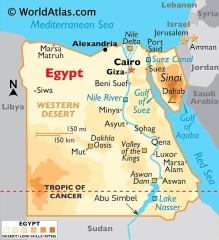The Aswan High Dam is one of the world's largest embankment dams, built across the Nile at Aswan, Egypt, between 1960 and 1970. Abu Simbel is a historic site comprising two massive rock-cut temples for Rameses II and wife Nefetari in the village of Abu Simbel near the border with Sudan. The complex was relocated in its entirety in 1968 to higher ground to avoid it being submerged by Lake Nasser, the Aswan Dam reservoir.
1-30/11/23
50 images
Return to MidEast Index
Return to MidEast Index
